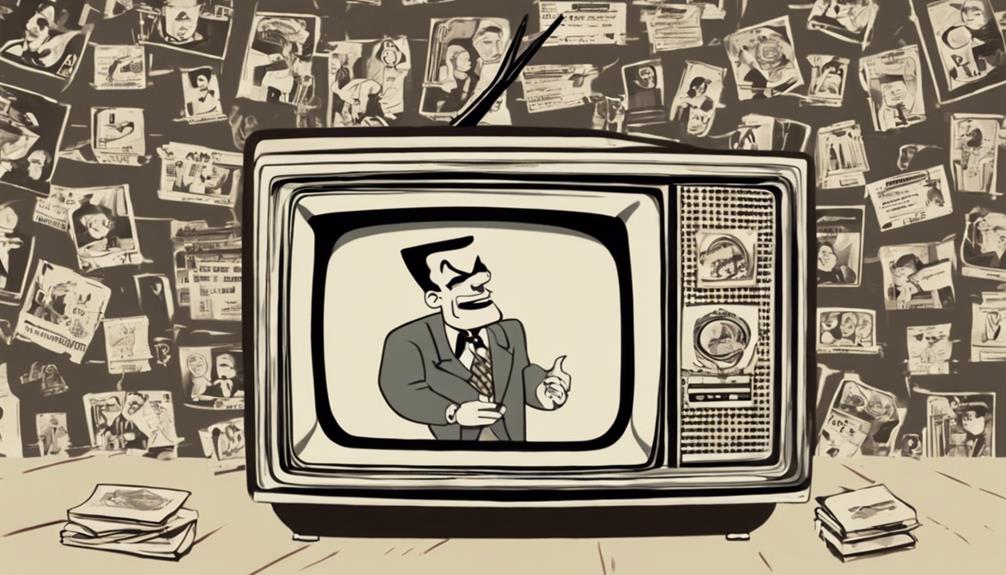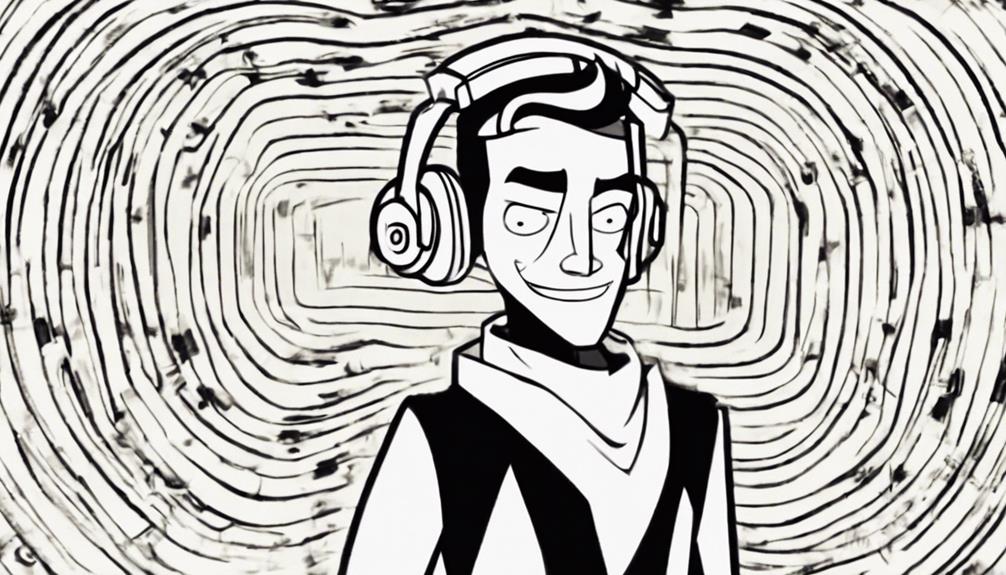The presence of subliminal messages in 'Clone High' prompts reflection on covert influences in media content. These messages are strategically designed to impact viewer perceptions without conscious awareness. Through clever visual tricks and auditory manipulation, subtle cues can shape understanding and evoke emotional responses. The ethical concerns surrounding subliminal messaging in media content have sparked debates and highlighted the potential for manipulation. Delving deeper into the topic of subliminal messages in 'Clone High' reveals intriguing insights into the hidden forces at play within the show.
Origins of Subliminal Messaging

Rooted in psychology and marketing research, the origins of subliminal messaging can be traced back to the late 19th and early 20th centuries. Initially, subliminal messaging was explored as a means to understand the subconscious mind and its influence on decision-making processes.
Psychological studies probed into how individuals could be influenced without their conscious awareness, sparking interest in applying these findings to marketing tactics.
Early experiments in the 1950s aimed to uncover the psychological effects of subliminal messaging on consumer behavior. Researchers sought to determine whether brief flashes of images or messages could impact perceptions and lead to desired outcomes, such as increased product sales.
These studies laid the foundation for utilizing subliminal messaging as a strategic tool in advertising and marketing campaigns.
Visual Tricks and Illusions
The exploration of visual tricks and illusions explores the intricate ways in which perception can be manipulated through clever techniques and stimuli. Optical illusions play a significant role in this domain, as they showcase how our brains can be easily deceived by visual stimuli. These illusions often lead to fascinating psychological effects, highlighting the complexities of human perception.
Moreover, cognitive biases heavily influence how we perceive visual information. These biases can lead us to make quick judgments or misinterpret visual cues based on our preconceived notions or past experiences.
In the domain of marketing, understanding these cognitive biases is essential. Marketers leverage visual tricks and illusions to grab consumers' attention, evoke emotions, and ultimately influence purchasing decisions. By tapping into these psychological effects, marketers can create compelling visuals that resonate with their target audience and drive sales.
In essence, visual tricks and illusions are powerful tools that can be harnessed to shape perceptions, influence behaviors, and enhance marketing strategies in a visually saturated world.
Audio Secrets Uncovered

An in-depth examination of audio secrets reveals the hidden techniques and strategies employed to manipulate auditory stimuli for various purposes. Sound manipulation plays an integral role in influencing audience perceptions and behaviors. Through subtle alterations in volume, pitch, or rhythm, creators can evoke specific emotional responses or emphasize particular messages within the audio content.
Whether it's a dramatic crescendo to heighten tension or a soothing melody to evoke nostalgia, sound manipulation can deeply impact how viewers interpret the content presented to them.
Furthermore, audio secrets have a profound effect on subconscious influence. Certain sounds or frequencies can bypass conscious awareness and directly target the subconscious mind, triggering instinctual reactions and shaping beliefs or attitudes without the viewer even realizing it.
Impact on Viewer Perception
Utilizing carefully crafted audio manipulation techniques can greatly influence how viewers perceive and interpret audiovisual content. Through the incorporation of subliminal messages, creators have the ability to engage in mental manipulation, subtly influencing the subconscious of the audience. These subliminal cues can impact viewer perception in various ways, shaping attitudes, emotions, and even behaviors without the viewer consciously realizing it.
Research indicates that subliminal messages can evoke responses that individuals are not fully aware of, suggesting a powerful tool for media producers to shape narratives and influence audience reactions. By strategically embedding these hidden messages within the audio of a show like Clone High, creators can potentially alter viewer interpretations and experiences, leading to a more engaging and impactful viewing experience.
Understanding the impact of subliminal messages on viewer perception highlights the intricate relationship between audiovisual content and audience reception. It underscores the significant role that subtle audio cues play in shaping our understanding and emotional responses to media content.
Ethical Concerns and Debates

Ethical considerations surrounding the use of subliminal messages in media production have sparked intense debates among industry professionals and scholars alike. The ethical implications of incorporating subliminal messages raise concerns about the manipulation of audience perception and behavior without their explicit consent. Critics argue that such practices can infringe upon individuals' autonomy and undermine their ability to make informed choices.
Controversial debates often center around the potential for subliminal messages to be used unethically, such as in advertising or political campaigns, where hidden messages could sway opinions or influence decision-making without individuals being consciously aware of it. This raises questions about the boundaries of ethical media practices and the responsibility of content creators to prioritize transparency and respect for their audience.
Furthermore, the psychological impact of subliminal messages on vulnerable populations, such as children or individuals with mental health conditions, adds another layer of complexity to the ethical discourse. As the use of subliminal messages continues to evolve in the digital age, ongoing scrutiny and ethical reflection are crucial to guarantee that media production remains ethically sound and respectful of viewers' rights.
Uncovering Hidden Messages
Exploring the layers of hidden messages embedded within media content reveals a complex landscape of subtle influences that can impact audience perceptions and behaviors. These hidden messages may carry a hidden agenda designed to sway individuals' thoughts or actions without their conscious awareness.
Understanding the psychological impact of these subliminal cues is essential in comprehending how media can shape beliefs and attitudes.
Advertising techniques often utilize subliminal messaging to influence consumer behavior. By subtly incorporating specific images, sounds, or words, advertisers attempt to create associations in viewers' minds, leading to desired actions such as purchasing a product or service. This form of mind control, although controversial, is prevalent in various forms of media and marketing strategies.
Uncovering hidden messages requires a critical eye and an awareness of the potential implications of such tactics. By deconstructing media content and analyzing the underlying messages, individuals can become more conscious of the influences that shape their perceptions and decisions.
This awareness can help mitigate the impact of subliminal messaging and empower individuals to make more informed choices.
Conclusion
In the world of media manipulation, subliminal messages hold a powerful influence over viewers, shaping their perceptions and behaviors without their conscious awareness. By utilizing visual tricks, audio secrets, and hidden messages, creators of Clone High have embedded subtle cues that leave a lasting impact on the audience.
The ethical concerns surrounding subliminal messaging continue to spark debates, questioning the boundaries of manipulation and the responsibility of content creators to uphold transparency and integrity in their work.
Dr. John Renoldson is a distinguished professor of Clinical Research Hypnotherapy He holds a PhD in Clinical Psychology and specializes in hypnotherapy and scientific research to enhance therapeutic outcomes. Dr. Renoldson has authored numerous peer-reviewed articles on the efficacy of hypnosis in treating conditions.




